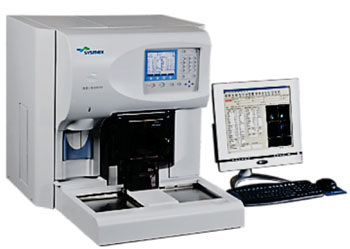Iron Status Determined in Pregnancy Using the Thomas Plot
By LabMedica International staff writers
Posted on 13 Jan 2016
Iron deficiency anemia (IDA) in pregnancy is common and associated with an increased risk for poor pregnancy outcomes, including intrauterine growth retardation, stillbirth, preterm delivery, low birthweight, and decreased survival of peripartum hemorrhage. Posted on 13 Jan 2016
Physiological changes during pregnancy affect routine tests for iron deficiency. The reticulocyte hemoglobin equivalent (RET-He) and serum-soluble transferrin receptor (sTfR) assay are newer diagnostic parameters for the detection of iron deficiency, combined in the Thomas diagnostic plot.
Hematologists at the University of the Free State (Bloemfontein, South Africa) recruited for a study 103 participants, ranging between 18 and 42 years in age (median 24 years), and 50 were primigravidae. The gestation at which they presented for their first antenatal visit varied greatly from five to 36 week and the median gestational age was 18 weeks. Most of the participants (61.1%) were in their second trimester of pregnancy (13- to 28-week gestation) and 32% of participants were human immunodeficiency virus (HIV)-positive.
A full blood count (FBC) with reticulocyte parameters (RET-He) was performed using the Sysmex XE-2100 analyzer (Sysmex Corporation; Kobe, Japan). Serum ferritin was measured on the Advia Centaur XP immunoassay system (Siemens Healthcare Diagnostics Inc.; Tarrytown, NY, USA). The sTfR was determined using the Siemens subsidiary Dade Behring N Latex sTfR kit on a Siemens BN Prospec System nephelometer, and the C-reactive protein (CRP) was measured using the Synchron LX20 instrument and Synchron CRP reagent kit (Beckman Coulter; Fullerton, CA, USA).
The scientists found that according to the Thomas plot, 72.8% of the participants had normal iron stores and erythropoiesis. Iron-deficient erythropoiesis was detected in 12.6%. A third of participants were anemic. Serum ferritin showed excellent sensitivity but poor specificity for detecting depleted iron stores. Participants in their first trimester of pregnancy were less likely to have iron-deficient erythropoiesis and functional iron deficiency than participants in the third trimester. HIV status had no influence on the iron status of the participants.
The authors concluded that their findings reiterate that causes other than iron deficiency should be considered in anemic individuals. When compared with the Thomas plot, a low serum ferritin is a sensitive but nonspecific indicator of iron deficiency. The Thomas plot may provide useful information to identify pregnant individuals in whom hematological parameters indicate limited iron availability for erythropoiesis. The study was first published online on November 14, 2015, in the International Journal of Laboratory Hematology.
Related Links:
University of the Free State
Sysmex Corporation
Siemens Healthcare Diagnostics Inc.









 Analyzer.jpg)

 assay.jpg)




